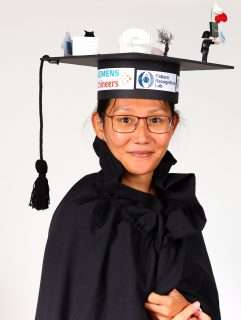Siming Bayer
Point-based Registration of Vascular Structures: Applications for Diagnostic and Interventional Procedures
With the introduction of computer-aided methods for diagnosis and intervention, patient outcomes of many clinical procedures have been increased tremendously in the last decades. An essential task thereby is the registration of inter- or intrapatient images that are acquired using a single or multiple imaging modalities. In principle, vasculature permeates through all organs of human body. As it is interbedded spatially, it reflects the pathological changes of the surrounding tissue. Thus, accurate and robust registration methods to align vessel structures or images have the capability to benefit a large variety of clinical procedures. Numerous methods that propose novel vessel registration algorithms have been published to date. Both intensity and feature-based methods are proposed, where a clear dominance of feature-based, especially point-based methods, can be derived from the summary of the state-of-the-art. Although the methods proposed in the literature demonstrate promising results for dedicated clinical set up, a generalized approach for vessel registration regardless of region of interest has not been proposed and evaluated. Furthermore, most state-of-the-art methods requires cumbersome hyperparameter tuning, which reduce their clinical applicability consequently. Therefore, a primary goal of this thesis is to develop, implement and evaluate an accurate and inherent robust vessel registration framework with the generalizability and applicability to various clinical applications. Recent progress in machine learning and deep learning opens new perspectives to improve the efficiency of the conventional registration methods for vasculature. Promising registration results have been achieved with different learning paradigms, such as reinforcement learning, supervised- and unsupervised learning with synthetic and clinical data. Hence, a secondary goal of this thesis is to investigate the potential of other machine learning and deep learning techniques to resolve vessel image registration problems. One of the two point-based registration frameworks investigated in this thesis utilizes mixture models to align the centerlines of vasculature. Thereby, a hybrid mixture model is proposed as a key part of the framework, that models the spatial and topological information of the vasculature simultaneously and is consequently equipped with significant discriminative capacity. Moreover, an automatic refinement mechanism to identify regions with missing data is formulated. The final transformation to the target image can be estimated with different methods such as Thin-Plate-Spline, B-Spline or Gaussian Process. The evaluation with synthetic, phantom and clinical data acquired from different clinical procedures demonstrate the accuracy and inherent robustness of the entire vessel registration framework regardless of clinical set up. The other approach formulated in this thesis makes use of imitation learning paradigm to overcome the weakness and challenges of adopting reinforcement learning for image registration problem. Under the guidance of a demonstrator an agent is trained to find the optimal displacement of landmarks. The network architecture is inspired by PointNet that is able to consume raw point data as input. The proposed framework is evaluated with clinical fundoscopic images in a retrospective manner. A special attention of experiments conducted is to understand the principles of our imitation network, where the influences of the model parameters are analyzed in detail. The evaluation results demonstrate the potentials and effectiveness of the imitation network to register vascular images for the first time.
